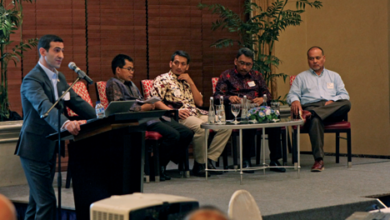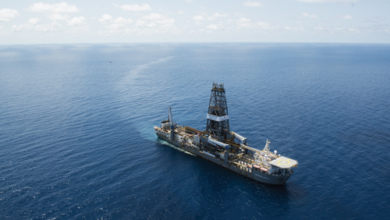VisiTrak services may eliminate need for pilot wells in wellbore placement
By Alex Endress, Editorial Coordinator

As operators continue to target increasingly complex geological formations in deepwater reservoirs, accurate and efficient horizontal wellbore placement has become essential to productivity. Conventional methods for mapping out wellbore placement involve drilling pilot wells, which can cost millions of dollars to drill. Baker Hughes aims to remove the need for such pilot wells, while also improving recovery, with the VisiTrak Geospatial Navigation and Analysis Service, commercially launched in July 2015. “This represents the combination of two decades developing reservoir navigation,” said Jon Skillings, Product Line Manager, Reservoir Navigation Services, Baker Hughes.
The service is able to map out a full geological interpretation around the wellbore in real time with the help of shallow, deep and extra deep reading sensors that are attached to the rotary steerable-equipped BHA. The sensors are equipped with both omnidirectional – observing 360˚ around the BHA – and extra deep reading azimuthal resistivity functionality. Together, these capabilities allow the operator to measure the targeted reservoir and detect bed boundaries from up to100 ft away using low-frequency electromagnetic waves, Mr Skillings said.
Data from the sensors is interpreted using a semi-automated inversion algorithm. “The algorithm allows the user to select the most appropriate inversion strategy for each geological scenario by incorporating the operator’s prior geological knowledge about the reservoir structure and properties to define plausible parameter ranges,” he said. Baker Hughes developed VisiTrak specifically for deepwater horizontal drilling in places like the North Sea – offshore Norway, UK and Holland, as well as offshore Brazil and West Africa.. In these places, Mr Skillings pointed out, the costs of missing or drilling straight through the reservoir can be especially high.
In a 2012 field trial, the technology was used to optimize wellbore placement in a reservoir offshore Brazil. In this project, the operator was looking to drill an 8 1/2–in., 3,000ft horizontal section into the reservoir sand level, which was identified to be a productive sand type. However, the distribution and thickness of this sand formation inside the reservoir wasn’t accurately understood without the use of pilot wells. “Part of the operator’s challenge in eliminating pilot holes was the ability to actually see top reservoir from a considerable distance above, allowing the well to be successfully landed in the target.,” Mr Skillings said. Other challenges included the requirement to map both changes in reservoir thickness and to map multiple boundaries in real-time.
“If we can map multiple boundaries, we can detect if there are additional targets to be drilled,” he said. “This allows operators to build a long-term management plan to maximize the production potential of the field.”
Drilling plans called for the crew to drill a 12 ¼-in. hole to the top of the reservoir and then set a 9 5/8-in. casing. Well inclination was to be designed to land at 90˚, maintaining this position in the target zone, before drilling into lower sand. The sand interval’s net minimum was about 1000 ft. To measure the reservoir and design a proper well path, Baker Hughes used VisiTrak, along with data from nearby offset wells. VisiTrak’s inversion modeling helped the drilling operation stay on track when faults and channel margins were crossed, netting a total sand length of 2,800ft drilled. This equals a net-to-gross of 75%.
For more information on the VisiTrak Geospatial Navigation and Analysis Service, click here.





